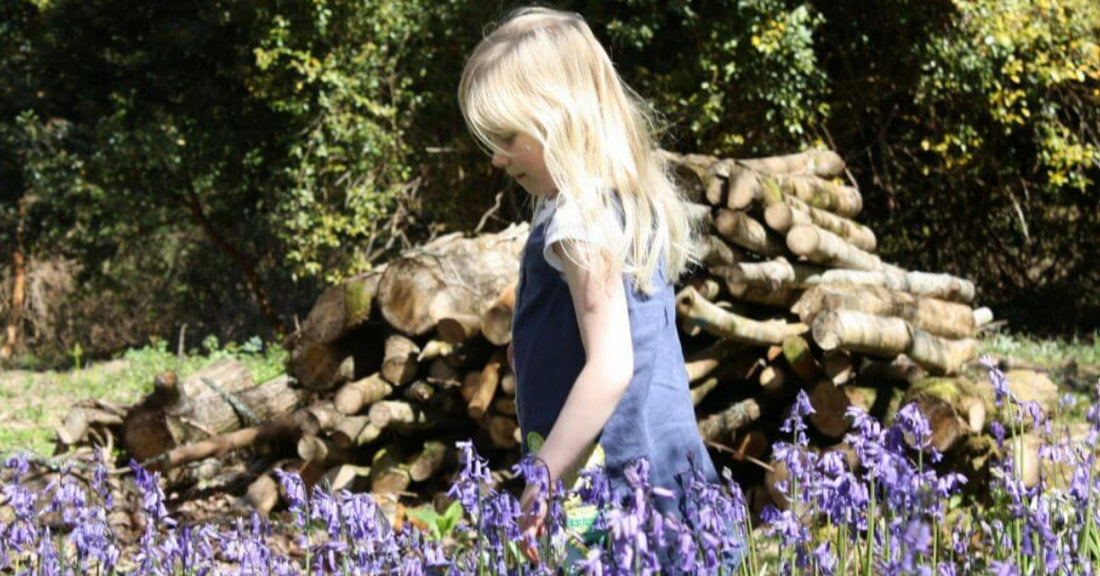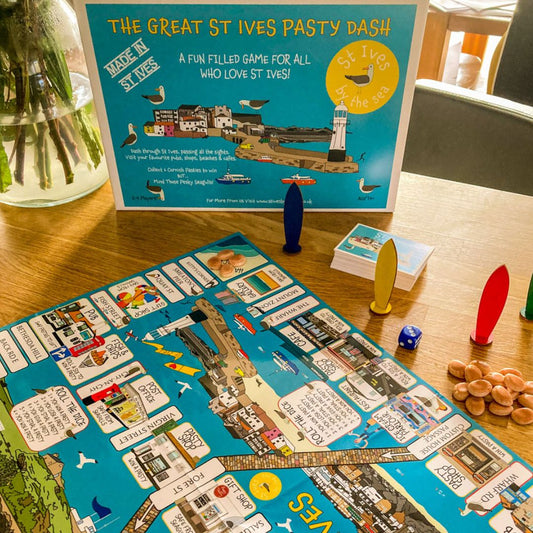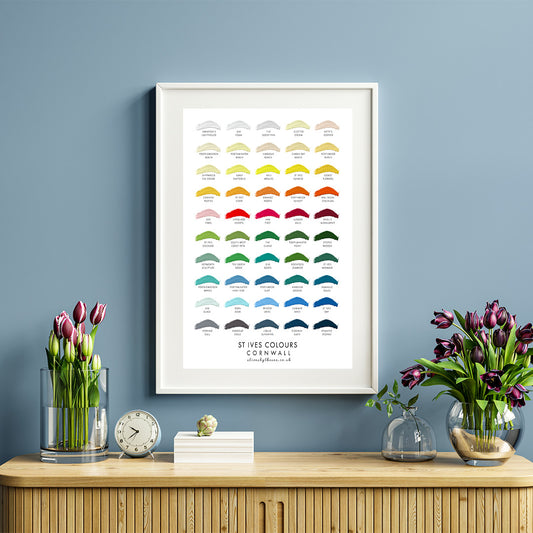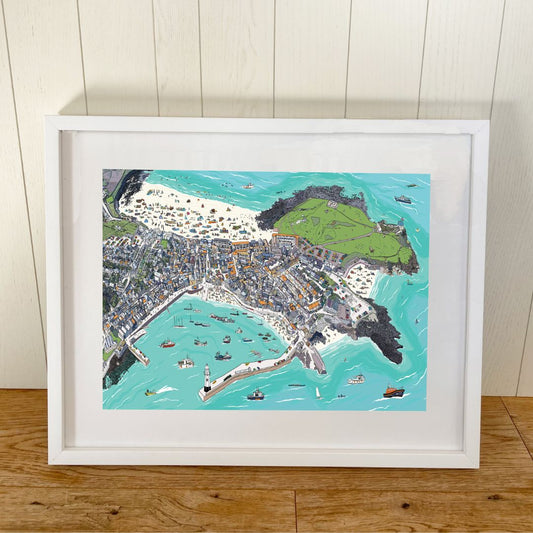The Best Places To Find Bluebells In Cornwall
Bluebells transform our woods and verges in the Spring time, with their intense covering of vivid blue. It is really one of nature’s most stunning floral displays and one I look forward to every year.
Bluebells are a species of deciduous woodland flower. They flower in the early spring in woodland, before the woodland canopy closes over with leaves.
The bluebell season in the UK usually starts around mid April. However, down here, with our almost frost-free Winters and milder climate, the bluebells can start flowering as early as Mid March. The bluebell season is not predictable – sometimes it comes very early, sometimes it comes late, and if it has been very dry in January and February, the display may not be that spectacular. However, I think this year it may be pretty good as we have had a fair bit of rain!
We are blessed down here in West Cornwall with many places where you can go and literally walk through the swathes of glorious bluebells.
Some Fascinating Facts About Bluebells
- The British bluebell is protected by law under the Wildlife and Countryside Act 1981. You cannot uproot it or take its seeds. If you are caught doing so you may face heavily fines and penalties.
- The reason why bluebells grow so well in the UK is that they grow well in old, dense woodland. The thick foliage limits the growth of other competing flora. This encourages the huge swathes of bluebells which are so attractive in Spring.
- Bluebells were voted as the UK’s most favourite wild flower in 2015. I’m not sure who gets asked to vote in these polls (I know I’ve never been asked), but I have to agree the bluebell is up there as one of my favourites.
- Bluebell sap was used in the Medieval times to attach feathers to arrows. It must be very sticky!
- Bluebells contain cancer-fighting chemicals. Certain water-soluble alkaloids are chemically similar to those used to fight HIV and cancer. In the middle ages the bulbs were used as various remedies and to help stop bleeding.
- The Spanish bluebell was introduced by the Victorians as a garden plant. It is more vigorous and cross-breeds with the English bluebell. This one of the reasons why English bluebells are protected. The easy way to tell them apart is the Spanish bluebell has no scent and is much lighter in colour than the English bluebell.
I’ve put together a list of places I know about where you can go and find lovely bluebell displays. If you know of any other places please do let me know – I will be happy to add them to my list!
Best Places To Find Bluebells Near St Ives, Cornwall
Tehidy Woods (Near Camborne)
Gorgeous, gorgeous Tehidy, we do love you. Tehidy Woods is really a place for every season, and they do bluebell season so well. Park at the North Cliffs car park and walk through the trees. Simply stunning! FREE
Steeple Woods Nature Reserve (St Ives)
I didn’t realise until last year that we had bluebells right on our doorstep! Steeple Woods is below Knills Monument, overlooking St Ives and Carbis Bay. Drive up there and park in a layby. Walk down through the woods and spot little pockets of bluebells. FREE
Anne’s Wood (Lelant)
This is another one that I have only just discovered. Anne’s Wood is a tiny little wood behind Lelant. It is a lovely spot to have a romp around with the kids and discover the odd bluebell or two! FREE
Godolphin House and Estate (National Trust)
Godolphin is a wonderful place to visit and make a bit of a day of it. You can wander through the woods carpeted with bluebells, go for a stroll along the river and have a fab cup of tea in the cafe. Garden entry (free with National Trust Membership) £7 per adult, £4 per child. Family tickets available.
Trengwainton Gardens (near Penzance)
Trengwainton is known as the National Trust’s earliest flowering Spring Flower garden. They have breath-taking displays of magnolias, rhododendrons and camellias, as well as bluebells hidden away in their woodland. Entry (free with National Trust Membership) £9 per adult, £4.50 per child. Family tickets available.
Trewidden Gardens (near Penzance)
Trewidden is a real hidden gem of a garden and is known as one of the Great Gardens of Cornwall. They have magnificent magnolias and camellias which put on a superb Spring floral display. Adults £6, under 16s go free.
Trelowarren (near Helston)
Trelowarren had their first bluebell open day last year on the 30th April. We went along with the kids and had an amazing time. I’d never heard of Trelowarren before, possibly because they don’t have many open days – it is usually a private holiday place with a spa. It is a stunningly beautiful estate with fields, lawns, gardens and woodland to explore. They are having another open day (this time they are calling it a Spring Flower Day) on the 23rd April. It is definitely worth the drive and if the weather is good take a picnic. Entry is £5 per car.
Enys Gardens (near Penryn)
Saturday 29th April – Sunday 7th May is the Bluebell Festival at Enys Gardens. During this week the gardens will be open from 11am – 5pm. You do have to pay for entry – £5 per adult, £2 per child and under 5’s go free. Dogs on leads are welcome.
Idless Woods (near Truro)
With it’s woodland walks and cycling trails Idless Woods is a great place to find bluebells in the Spring. FREE
Glendurgan Gardens (near Falmouth)
Glendurgan Gardens put a lot of effort into their Spring flower displays. The banks are covered in flowers, from primroses to bluebells. Entry (free with National Trust Membership) £9.9 per adult, £4.95 per child. Family tickets available.
If you know of any other places in West Cornwall that are lovely to find bluebells, please do let me know. I will be only too happy to add them to my list – and hopefully visit them too!
Have you read 101 Brilliant Things To Do In St Ives Cornwall?
It will give you so many ideas of things you can do on your next visit to our lovely town!
Have You Heard About Our St Ives Game?
If you like St Ives you will love playing it!








